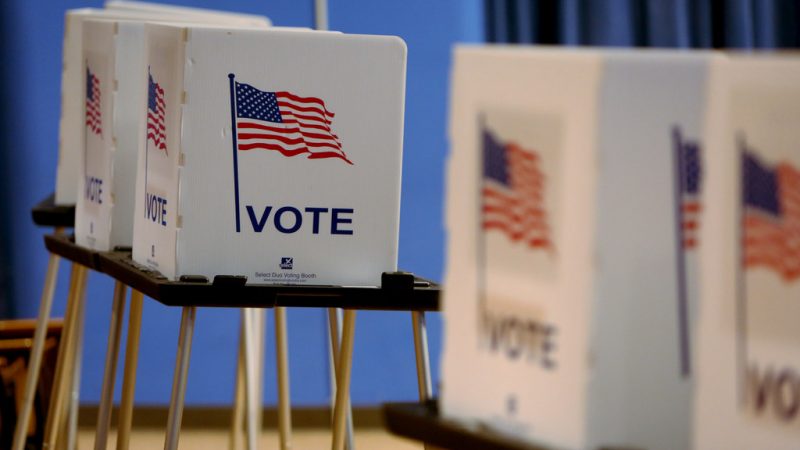State officials are still unsure why some 1,600 absentee ballots from voters in the Fox Valley ended up in a Milwaukee postal sorting facility or why some Oshkosh voters — including the Assembly minority leader — never received the ballots they’d requested for the April 7 election.
The state Elections Commission released a report Monday documenting issues that arose during the April 7 election, which saw a record number of voters cast their ballots by mail amid the COVID-19 pandemic.
One of the most high-profile issues revolved around three tubs of absentee ballots found in a mail processing center. The issue prompted U.S. Sens. Tammy Baldwin, D-Madison, and Ron Johnson, R-Oshkosh, to call for an investigation by the U.S. Postal Service Inspector General. But the Elections Commission wrote in the report it has been unable to “to learn anything about the status of the inquiry.”
The report also said the U.S. Postal Service hasn’t responded to written inquiries seeking specifics on the ballots.
According to the report, agency staff received a call from the Postal Service’s Great Lakes Regional office about three tubs of absentee ballots from the Appleton-Oshkosh area. Other than describing the tubs in which the ballots were found and that there were approximately 1,600, the Postal Service hasn’t provided other information to the commission.
The report also detailed agency efforts to investigate reports of ballot requests in Oshkosh that were received, but not fulfilled. The report noted many cases involved incomplete requests such as failing to provide a photo ID. But “several dozen” were entirely valid, including those submitted by Assembly Minority Leader Gordon Hintz, D-Oshkosh, and his wife.
The ballots in question were part of a batch generated March 24. Of the first quarter of records generated, more than 90 percent were returned. But of the remaining three-fourths of that batch, under 1 percent were returned, suggesting “that something happened to the ballots in the latter portion of the batch.”
The commission and Oshkosh election staff found no evidence of a technical failure, and the city clerk indicated “with confidence” they were mailed.
That suggests it was neither a system error nor a printing problem.
“Instead, one of two events are possible: either a user did not apply the mailing labels to ballot envelopes, or these ballots were bundled together and collectively encountered an issue in the mailing process,” the report said.
The report, released ahead of Wednesday’s commission meeting, is a detailed look at a record number of absentee ballots cast.
According to the report, the April election produced a number of state records, including:
*most by mail ballots ever cast in any Wisconsin election;
*most absentee ballots ever cast in any Wisconsin election;
*second-most total ballots ever cast in a Wisconsin spring election;
*and most in-person absentee ballots in a Wisconsin spring election.
The election was marked by a push to get voters uncomfortable with voting at the polls amid the pandemic to request an absentee ballot, as well as a series of court rulings and the guv making a last-ditch effort to push back the election date.
The federal courts ended up allowing absentee ballots postmarked by April 7 but received by 4 p.m. April 13 to be counted. Normally, absentee ballots must be received by 8 p.m. on election day.
According to the report, just over 79,000 ballots were received by clerks between April 8 and April 13.
In total, nearly 89 percent of the more than 1.3 million absentee ballots sent were returned and counted. The report found 2,659 ballots, 0.2 percent of the total, were rejected because they were returned after the April 13 deadline while some 20,500 ballots, or 1.6 percent, were rejected for another reason.
Of that total, some 5,500 ballots were rejected because they were not postmarked by election day. But commission officials say in the report that number could change as local officials could have interpreted the ballot status definitions differently when they submitted their reports.
Some raised concerns during the election that ballots mailed before April 7 that lacked a postmark wouldn’t be counted.
Just shy of 121,000 absentee ballots were sent by local election officials but not returned, a tally that equated to 9.3 percent.
Those figures largely tracked with figures for previous April elections, though mail-in ballots were a slight percentage of the total until this year. Just over 2 percent of absentee ballots in April elections were rejected between 2016 and 2019, 11.6 percent were not returned over the same period.
Commission staff said in the report that if voting patterns hold for the November election, the state could see more than 1.8 million requests for mail-in absentee ballots.
“This kind of volume would present terrific challenges for Wisconsin election officials at all levels,” the report said.
To prepare for a potential surge in mail-in ballots, commission officials said they are: “exploring the opportunity” to mail every registered voter an absentee request form; seeking to improve the photo ID upload and confirmation of submission aspects of the online MyVote absentee ballot request system; and revamping the MyVote system so local officials won’t be forced to manually enter data into the voter registration system.
The report also calls for the MyVote system to integrate USPS Intelligent Mail Barcodes to track the delivery status of absentee ballots.
Any action taken by the commission would have to win the support from a majority of commissioners at the meeting on Wednesday. The commission is evenly split between Democrats and Republicans.
See the report:
https://elections.wi.gov/




